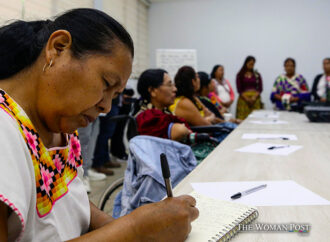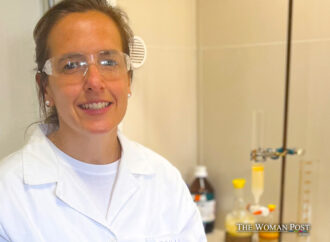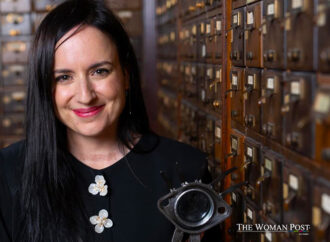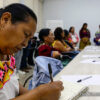Natalia Pinilla, born in San Vicente de Chucurí in Santander, Colombia, at the age of 31 and living in Medellín for two years, winner of the “Rising Star” category at the Woman that Builds Awards spoke to Thewomanpost.com She is the leader at Kiwibot, robots that provide food delivery service at home on university campuses in the United States
This industrial designer from the Industrial University of Santander has been working at Kiwibot for five years and little by little she has been climbing the hardware and manufacturing team. He joined the operations team, but he always had the intention of being part of product development, so he finished his responsibilities quickly and looked for tasks where he would support and show his abilities until he became assistant to the leader, and today, leading the hardware team and manufacture.
Kiwibot robots use satellite technology for their home deliveries automatically, driving to the customer who requests their food on the university campus. When asked if they are managed by people, Natalia answers “yes, we use teleoperation to control the robots; however, we rely on tools that make robot control easier and more efficient. In parallel, we have made progress in autonomous operation."
Read more content like this at: thewomanpost.com
Investigating the concerns of the followers of these robots, we asked Natalia if she has thought about the support of artificial intelligence and she affirms that "definitely yes, since with AI we can improve manufacturing processes and QA in the production of robots.
This work of technological creation and constant perfection requires time and dedication regardless of gender, but it is evident that the employment of women in this field is low. Natalia, as the team leader, is aware of the numbers, but she affirms that opportunities are always open. “There are currently two women in the hardware and manufacturing team, but more and more women have joined the company. For example, the leaders of the maintenance, finance, and logistics area are Camila Pita, Leidy Gandica, and Ana Avellaneda”.
She then points out that there's no denying that when a job position is open, more men apply. “We make an effort to look for more resumes from women since they always apply in a lower percentage. The root may lie in the fact that fewer women are studying engineering careers associated with robotics at universities." For this portal in past editions, this same reflection was made by Norha Villegas Machado, dean of the Faculty of Engineering and Design at the Icesi University in Cali, Colombia, "the government has lowered support for scholarships for low-income women to study engineering and technology in quality private universities, and that frustrates the future for the quality of social life in cities as well as the development of the country. There is a lack of sound public policies thinking about the country and not in political parties”. And he clearly states "people get ahead with a quality education."
Faced with these analyses, Natalia is clear in her proposal to pave the way for other women to “make visible the progress we have had by including ourselves in this professional area; look for information channels where we reach potential candidates; educate companies and people who are already involved in technological processes. Finally, offer opportunities for women to apply, I mean, if you open a vacancy, probably in the first week, you will have received enough resumes to start discarding and move on to the next stages of the process, however, we can wait a few days additional to apply more resumes (including women). Now the question is to our readers, what more actions do you think can be managed so that women have a greater presence in the world of robotics?
And returning to Kiwibot, this Santanderean engineer tells what problem she is working on and how her solution is currently going, “the robot is a constantly changing product. All the time it is throwing us information about things that we can improve, what we do is separate it into projects to have better control and create goals that allow us to organize ourselves as a team. One of the projects is to improve manufacturing processes to mass produce efficiently, produce robots faster and at an even more competitive price.”
Natalia Pinilla, who has a specialization in Furniture Design from the University of Buenos Aires, always had in her mind to be a product developer; Today her goal is "to continue improving my knowledge in hardware and manufacturing and to contribute to the development of robotics for the benefit of people's well-being."
























Leave a Comment
Your email address will not be published. Required fields are marked with *